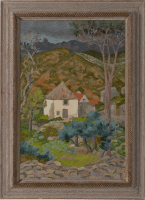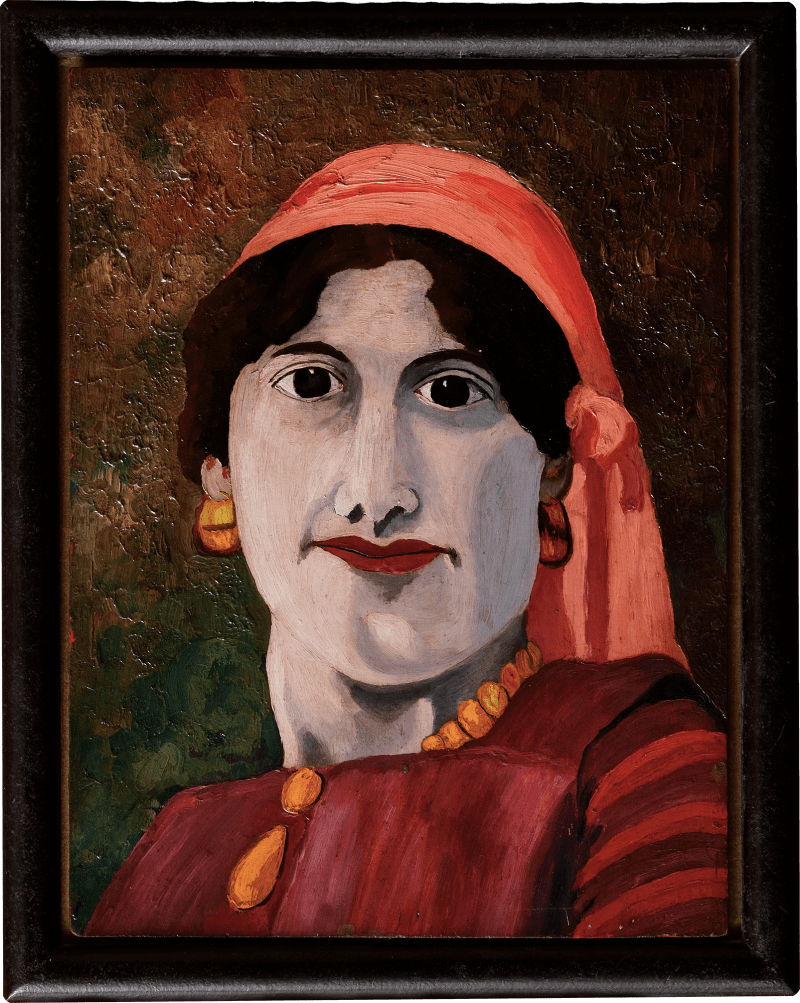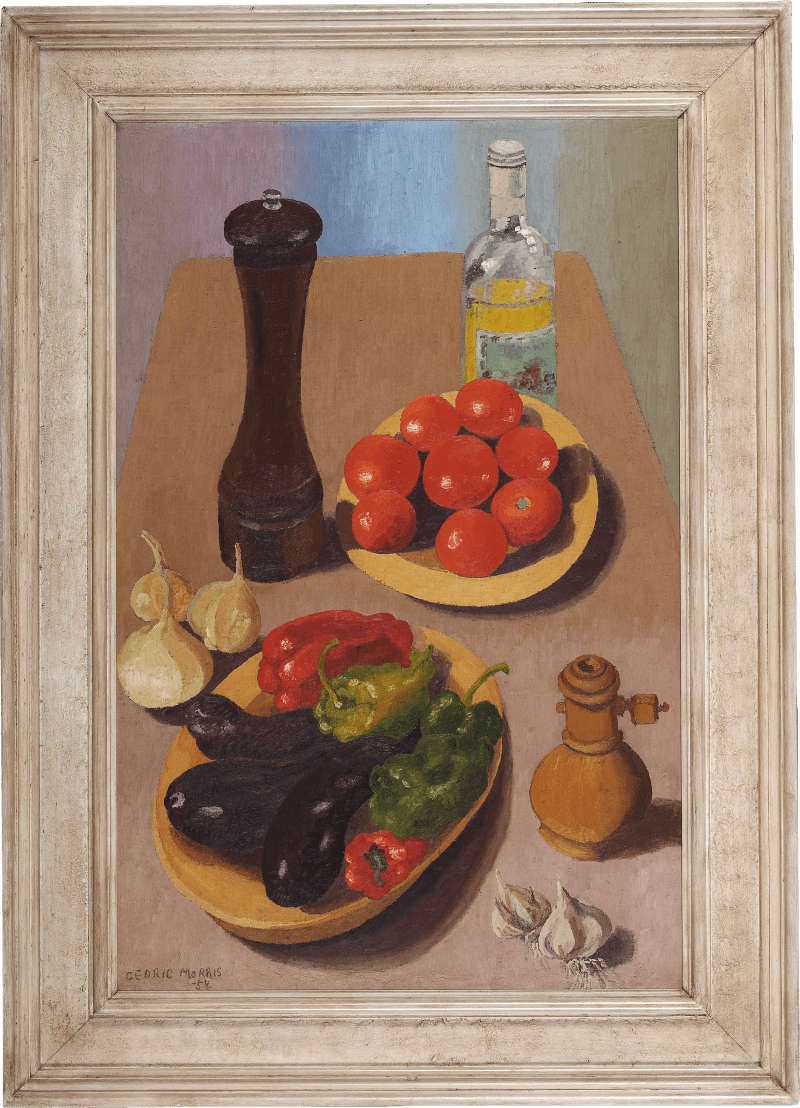Among the numerous places Cedric Morris visited during his extensive travels, Portugal was one of his most frequented.
Morris’ first trip to Portugal, with his partner Arthur Lett-Haines and artist-plantswoman Primrose Harley, was in 1950. He returned many times, often in the company of the plantsman Nigel Scott; these trips were primarily plant-hunting expeditions, with the purpose of finding new species of plants native to the area, to add to their full and varied plant collection back home at Benton End, Hadleigh, Suffolk. Morris had always preferred the countryside, and after the war Morris and Lett-Haines had moved to Benton End from London, which included a large house, studio and garden.
Morris would often take long walks when travelling, with the intention of stumbling across a particularly beautiful spot from which to paint en plein air. Preferring to work directly with oil paint on canvas, he rarely sketched his compositions in advance. This working method results in the honest...
Among the numerous places Cedric Morris visited during his extensive travels, Portugal was one of his most frequented.
Morris’ first trip to Portugal, with his partner Arthur Lett-Haines and artist-plantswoman Primrose Harley, was in 1950. He returned many times, often in the company of the plantsman Nigel Scott; these trips were primarily plant-hunting expeditions, with the purpose of finding new species of plants native to the area, to add to their full and varied plant collection back home at Benton End, Hadleigh, Suffolk. Morris had always preferred the countryside, and after the war Morris and Lett-Haines had moved to Benton End from London, which included a large house, studio and garden.
Morris would often take long walks when travelling, with the intention of stumbling across a particularly beautiful spot from which to paint en plein air. Preferring to work directly with oil paint on canvas, he rarely sketched his compositions in advance. This working method results in the honest and earthy embodiment of his subject matter as epitomised by this directly observed landscape, swathed thick impasto. The compositional approach adopted here further immerses the viewer within the scene, emphasising the rugged topography of the surrounding environment. Sintra, situated near Lisbon, has long been a tourist destination on account of its forested terrain and stunning landscape views. The small dwelling depicted here, and the rolling landscape in the background, are typical sites of this area in Portugal.













